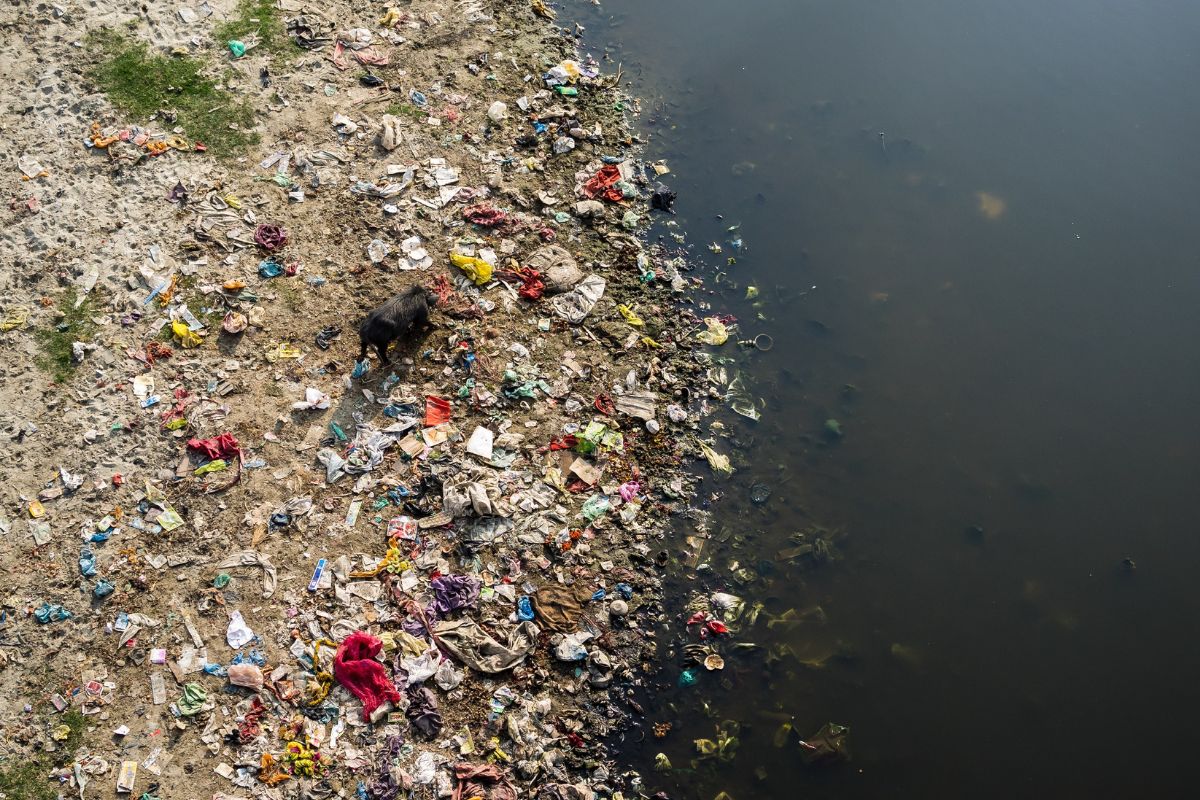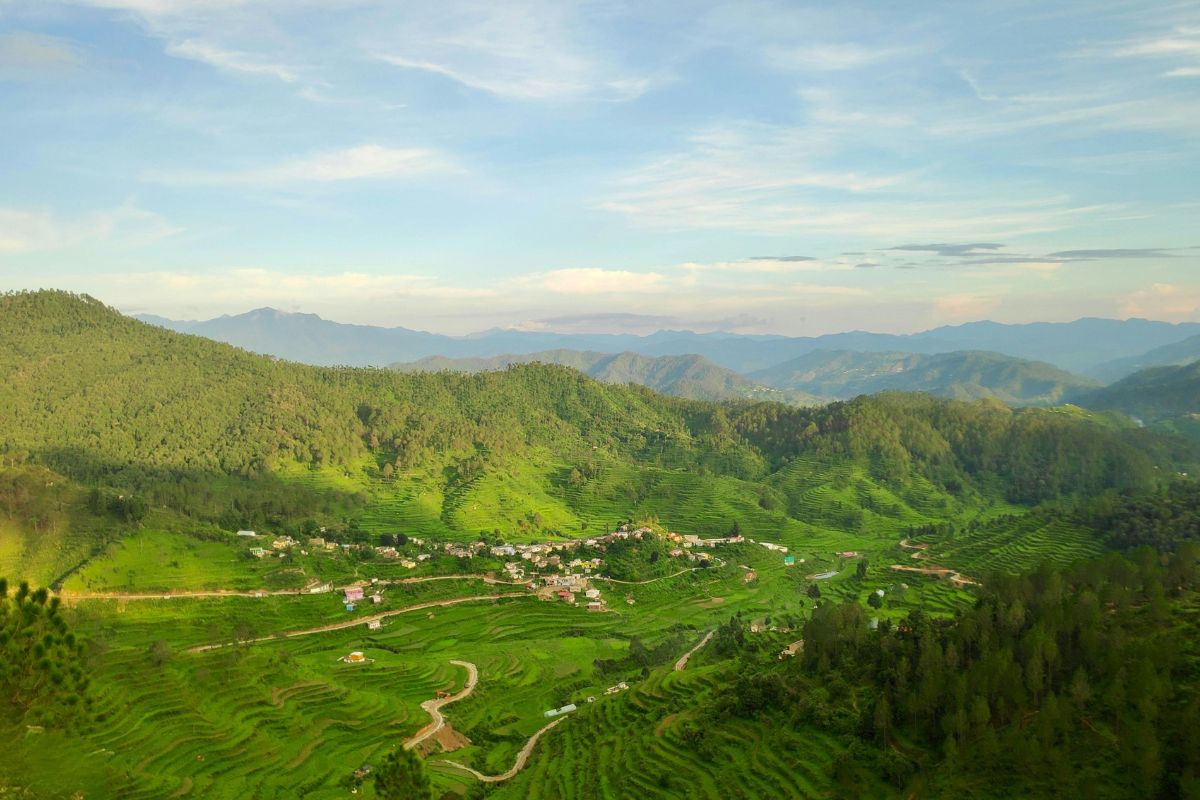As Chhath Puja celebrations began in Delhi, the debate over the Yamuna River’s cleanliness resurfaced, with fresh data from the Delhi Pollution Control Committee (DPCC) showing mixed results. While the BJP-led Delhi government claims that water quality has improved, the river remains far from clean.
The DPCC’s October 2025 report found that the Yamuna’s water quality deteriorated in October compared to September, though it is cleaner than last year. The report noted that the river is unfit for bathing across most stretches except at Palla, where it enters the city. The findings came just a day after Chief Minister Rekha Gupta and her cabinet inspected Yamuna ghats and assured safe conditions for Chhath Puja devotees.
Political tensions escalated as Aam Aadmi Party (AAP) leader Saurabh Bharadwaj accused the BJP government of “misleading the public” and challenged CM Gupta to drink water from the Yamuna to prove it was clean. Several AAP leaders later arrived at the Chief Minister’s residence carrying bottles filled with Yamuna water to press the challenge.
What Is the BJP’s Claim?
Delhi Water Minister Parvesh Verma defended the BJP government, saying it had achieved “visible improvement” in just seven months. He cited a 90% reduction in faecal coliform levels compared to 2024, according to DPCC data.
“The level at Palla dropped from 920 to 600 MPN, and at Okhla Barrage from 18 lakh to 2,700 MPN. For the first time, four of the eight sampling points are within or close to the permissible limit of 2,500 MPN/100 ml,” Verma said.
He added that unlike the previous AAP regime, the current government has made all reports public. “Earlier, data was hidden. Today, citizens can see every test result online. Women visiting the ghats are saying they’ve never seen the Yamuna this clean,” he claimed. BJP leader Kapil Mishra added that the party “never claimed Yamuna is drinkable” but said conditions for Chhath Puja have improved.
What Is the Reality?
The DPCC’s October 9 sampling, however, paints a different picture. The report shows that the river’s water remains “unfit even for bathing,” with Biochemical Oxygen Demand (BOD) levels at several drains, such as Molarband and Sahibabad, recorded at five times the safe limit. High Chemical Oxygen Demand (COD) and suspended solids indicate continued inflow of untreated sewage and industrial waste.
Experts say the temporary improvement earlier this year was due to September floods, which diluted pollutants. Once floodwaters receded, pollution levels rebounded. “The Yamuna’s self-cleaning capacity is low, and without controlling sewage inflow, no long-term recovery is possible,” a senior DPCC scientist said.
The data suggests that while the river appears cleaner in parts, it remains unsafe for bathing or drinking. The BJP’s claim of improvement is partially true, there is measurable progress, but the pollution problem is far from solved.
What’s Being Done
Since taking charge, the BJP government has pushed a multi-year clean-up plan. The focus areas include repairing sewage treatment plants (STPs), intercepting major drains, and expanding the sewer network to unconnected colonies. Officials say work is underway on 12 new STPs and desilting old drains feeding the Yamuna.
Water Minister Verma has promised to make the Delhi stretch of the river fit for bathing within three years. However, environmentalists caution that real change will require coordination with Haryana and Uttar Pradesh, which release both sewage and freshwater into the river system.
As the DPCC continues monthly monitoring, the Yamuna’s condition remains a barometer of Delhi’s environmental management, and a key political battleground.
Verdict: Yes, the Yamuna appears cleaner in 2025 than last year based on DPCC data. But it is still polluted and unfit for bathing. The BJP government’s claim of progress is partly true, improvement is visible, but the river is far from clean.
Support us to keep independent environmental journalism alive in India.
Keep Reading
Highway Halt Puts Kashmir’s Fruit Economy at Risk
MP brings back Bhavantar as farmers lose soybean harvests
Stay connected with Ground Report for underreported environmental stories.
Follow us onX, Instagram, and Facebook; share your thoughts at greport2018@gmail.com; subscribe to our weekly newsletter for deep dives from the margins; join our WhatsApp community for real-time updates; and catch our video reports on YouTube.
Your support amplifies voices too often overlooked, thank you for being part of the movement.









